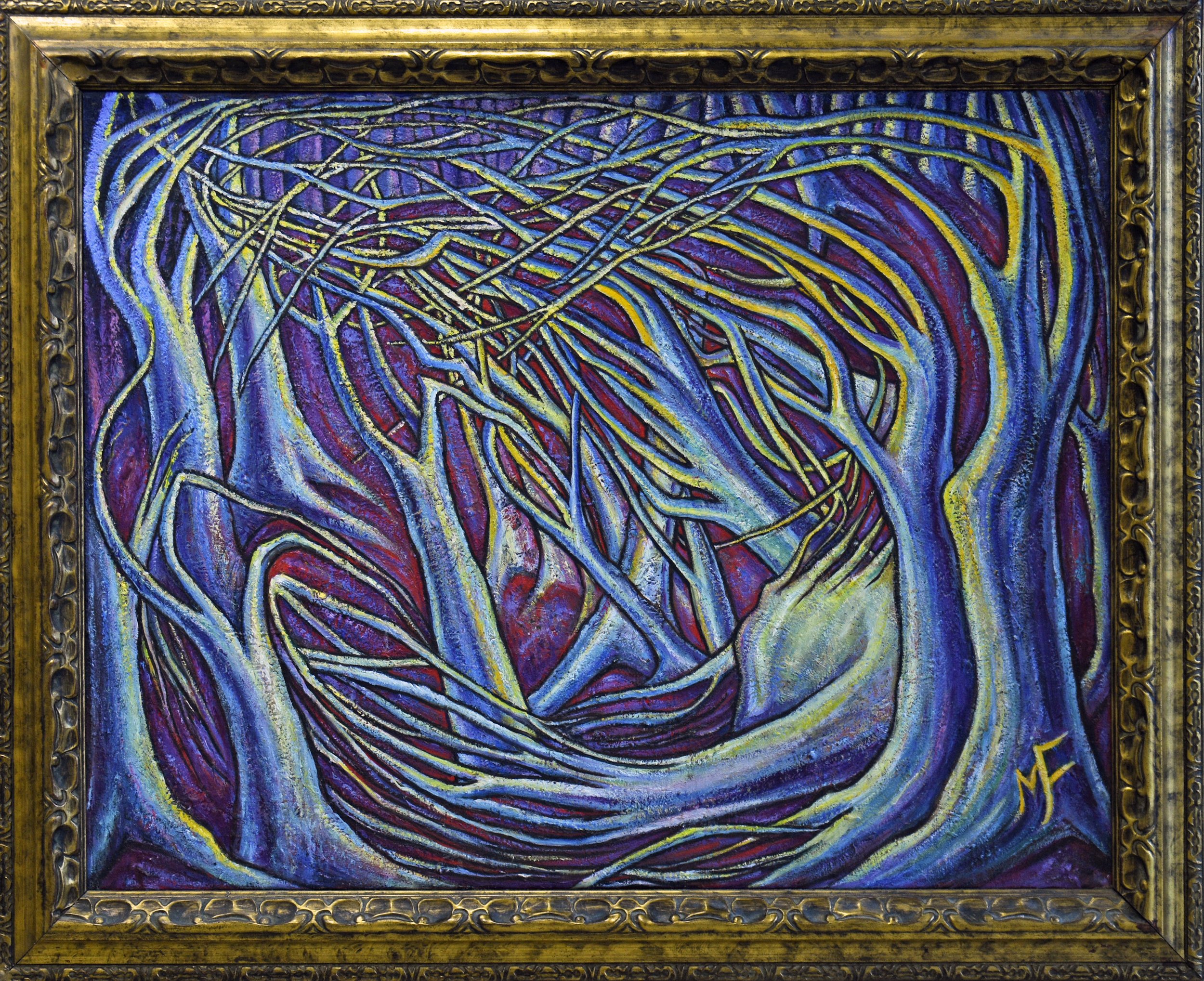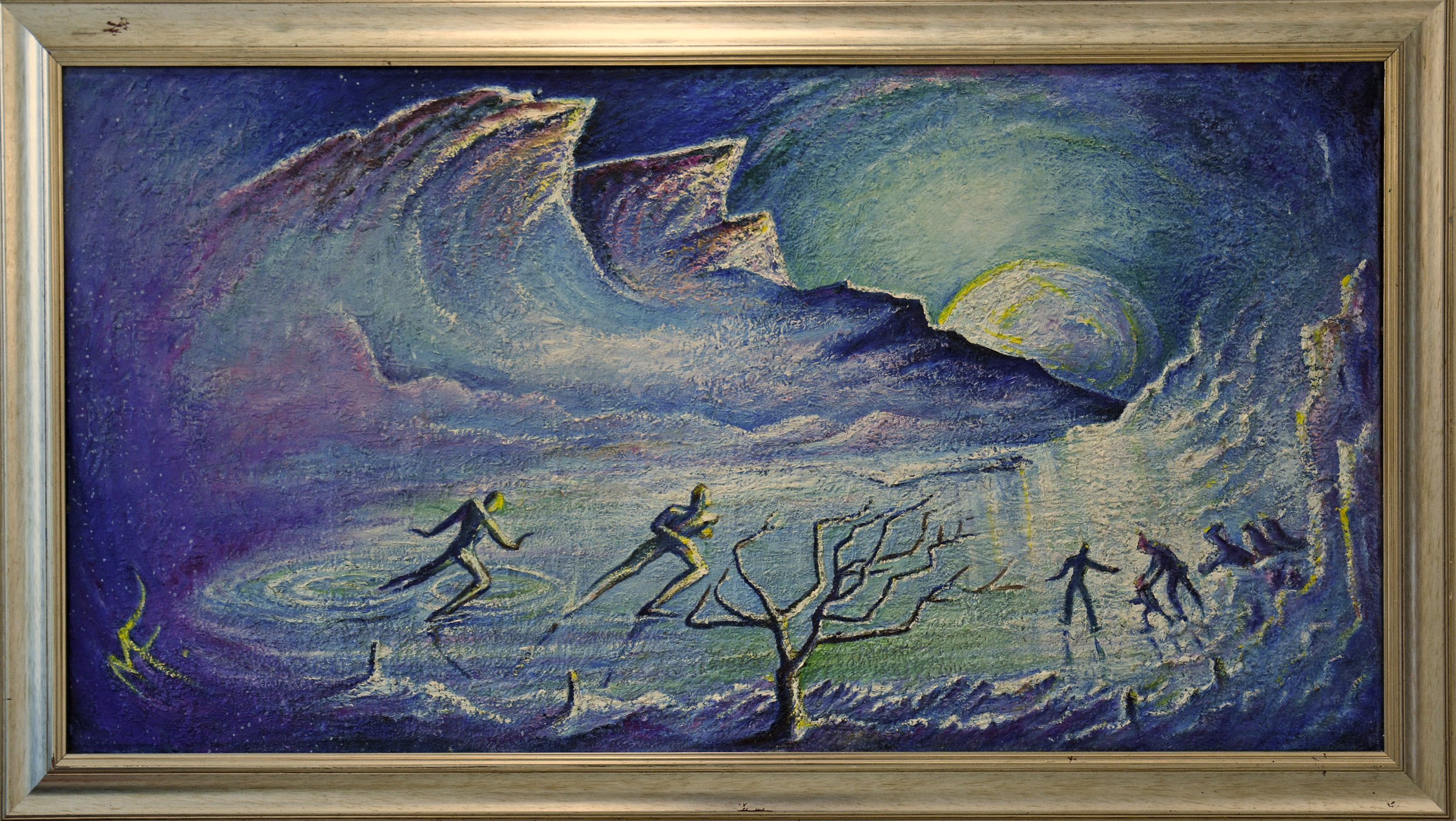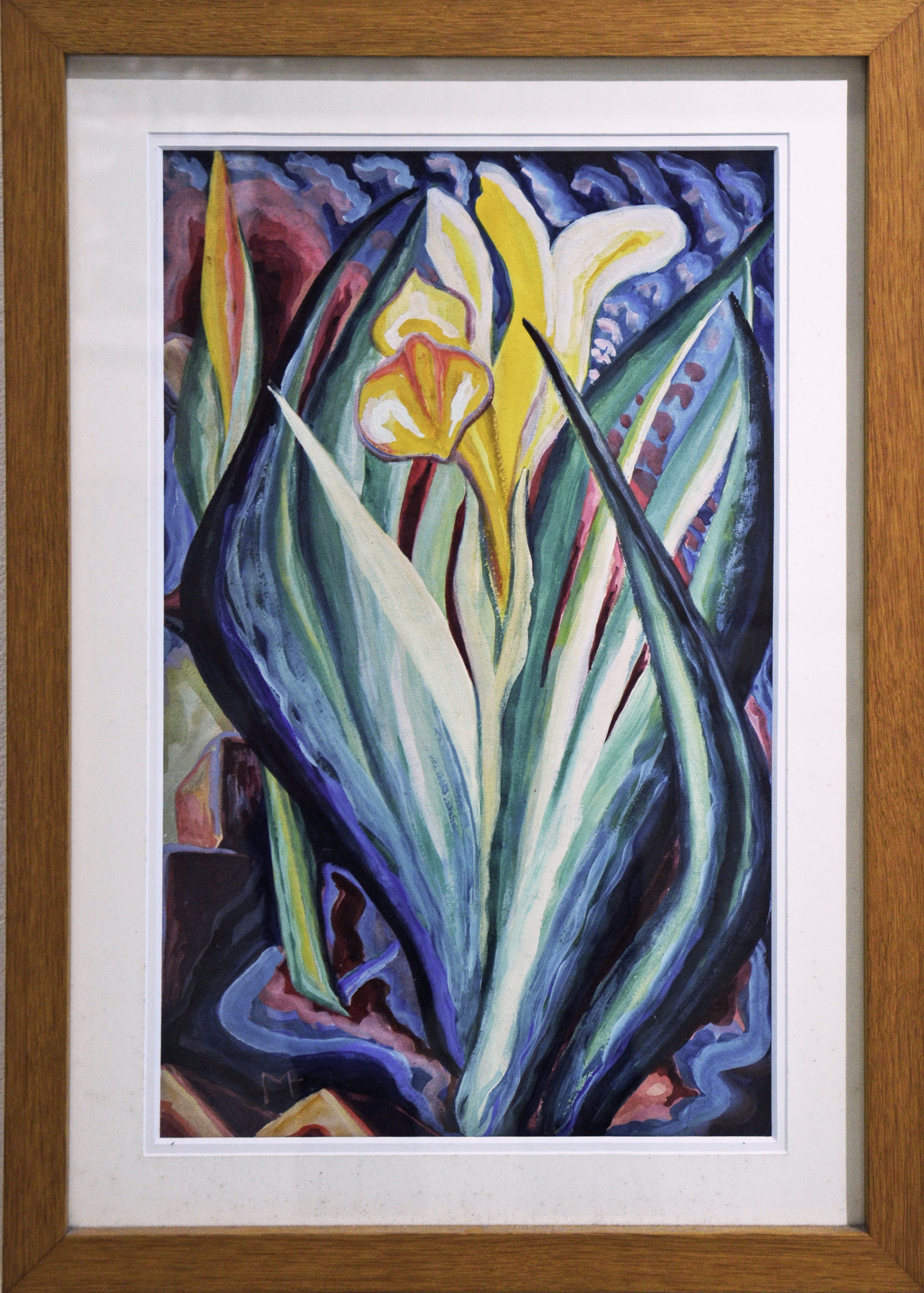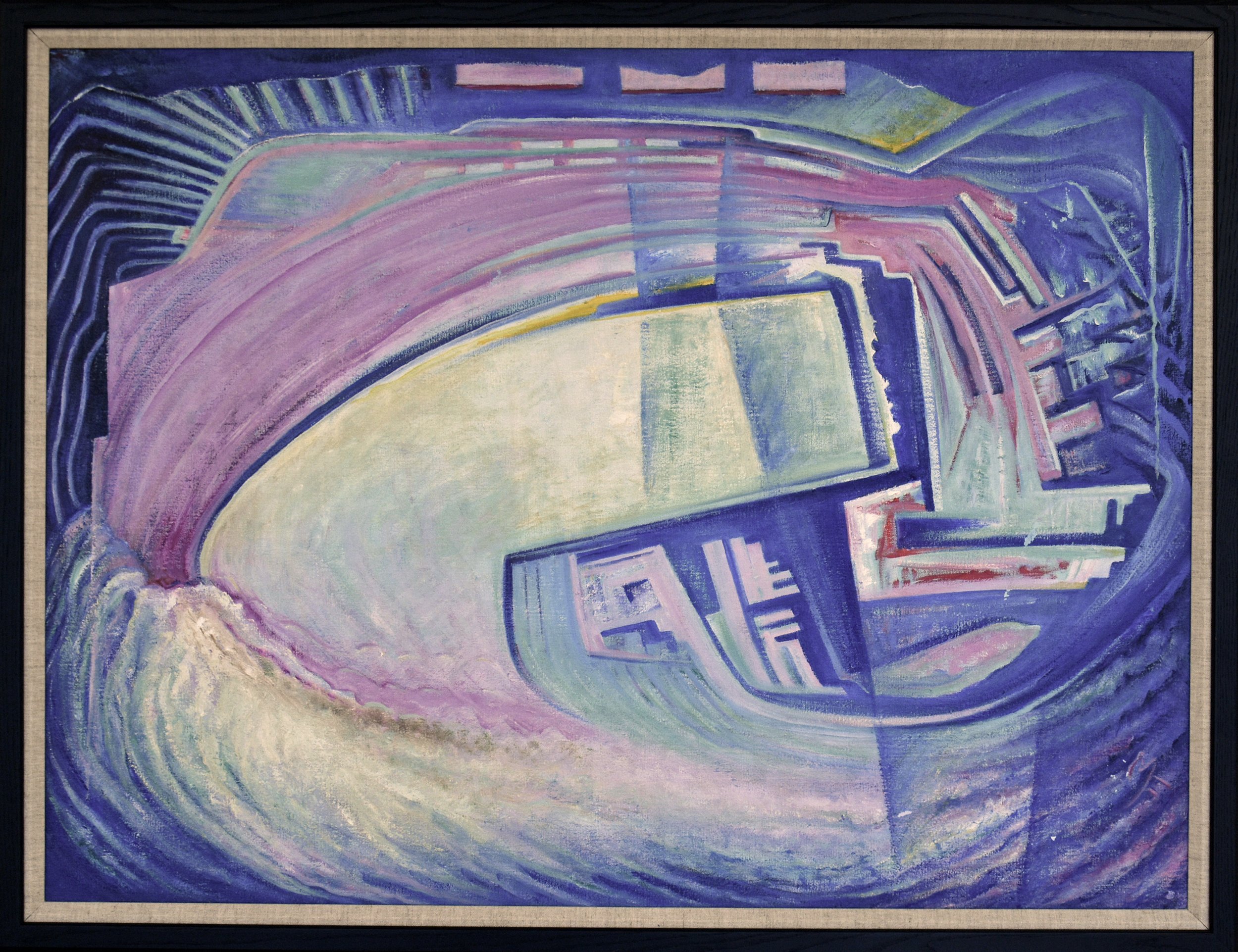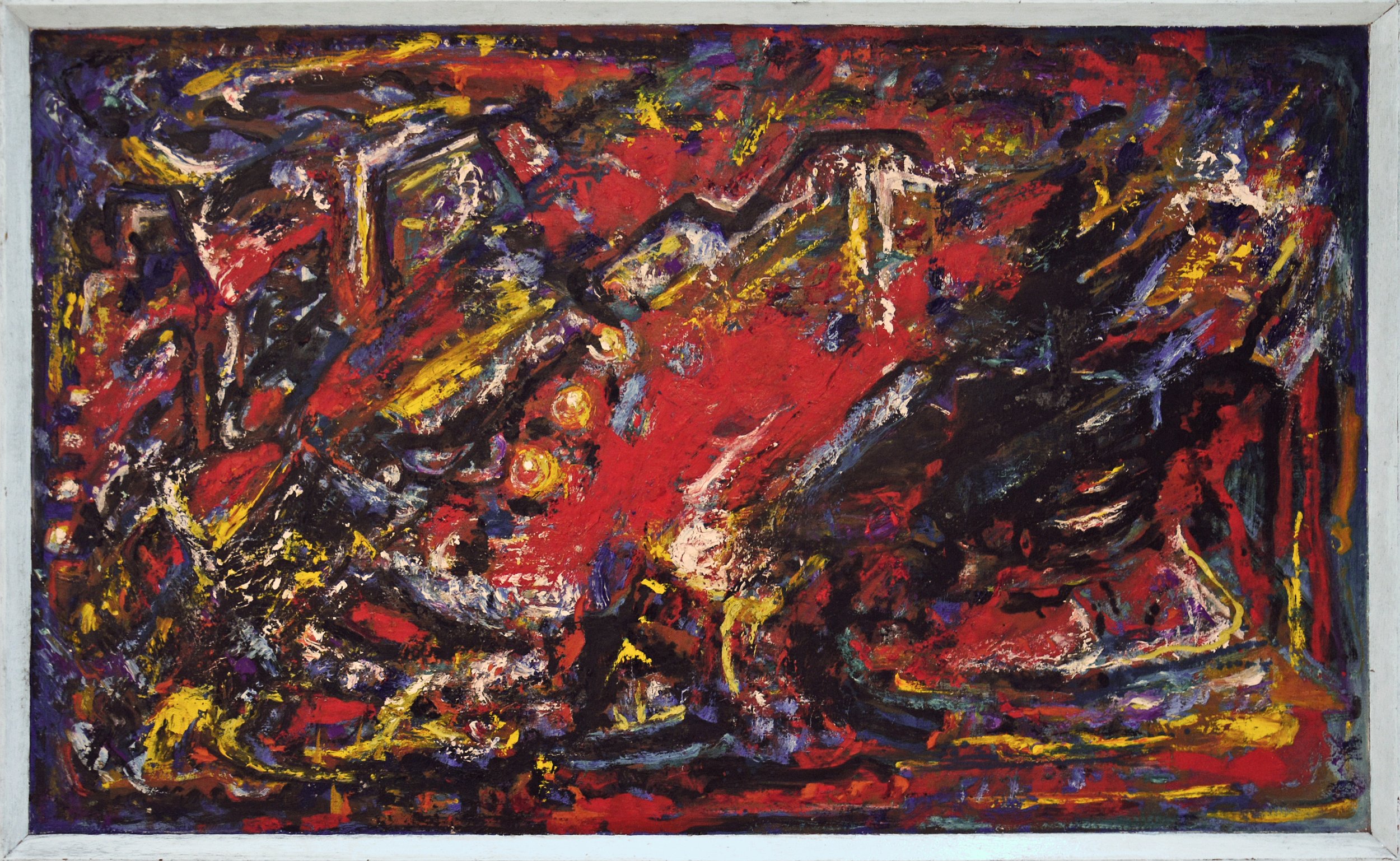
Millie Frood: An Introduction
The recent retrospective exhibition of Millie Frood’s work, ‘Strange Horizons’, held at North Lanarkshire Heritage Centre in Motherwell (February - May 2024), shed light on the oeuvre of a significant and individual voice within Mid-Twentieth Century Art. Frood’s dates of 1900-1988 span a century of technological development, and two apocalyptic World Wars, and we can trace the turbulent history of this period through her work, ranging from bucolic but also dream-like scenes of nature, to abstract works with titles such as ‘Destruction’ and ‘Aggression’.
We know very little about Millie Frood, with the exception of some bare facts, and the valuable recollections of those who knew her. Some of these memories have been made into an oral history through the diligent work of Rosie Shackleton, Assistant Curator with North Lanarkshire Council, her colleagues, and Neha Sayeed, a Postgraduate Student at the University of Edinburgh. The lack of archival material relating to Frood’s work is likely due to the lack of any close family member to carry the torch for her work. On Frood’s passing, the contents of her studio were first offered to a local auctioneer, but they did not proceed to a sale, and the paintings were then acquired by a Lanarkshire art collector. The collector then passed on a considerable number of works to Tom Bell Fine Art of Troon, who had them cleaned and re-framed for a retrospective exhibition held at Cyril Gerber Fine Art, Glasgow, in 1989. Frood’s work sold well at this exhibition. The majority of her known work has found its way into private collections, although two paintings are with North Lanarkshire Council, and one is held by the prestigious Fleming Collection of Scottish Art.
The present exhibition was catalysed through Neha Sayeed having chosen Millie Frood as the subject for a dissertation. By way of preliminary research, Ms Sayeed made contact with North Lanarkshire Council and with myself, as a collector of Frood’s work. It was agreed that a retrospective exhibition would be a rewarding and indeed a necessary project.
Amelia Frood was born in Motherwell on 27th August 1900, and was the daughter of John Frood and Jessie Frood, née McKenzie. We do not have any record of her mother’s occupation. Her father’s career is documented; he had creatively reinvented himself, from telegram boy for the Caledonian railway, to joiner, to hatter and outfitter in Motherwell, to owner and manager of a steel plant in Lanarkshire. He had also taken on public service as the administrator of the poor law in the area, before becoming Provost of Motherwell and Wishaw, dying in service in 1922. Millie Frood had one brother, and a sister.
Millie Frood attended the Glasgow School of Art and later became an art teacher at Bellshill Academy. She did not marry and no information has come to light about significant relationships. According to those who knew her, Frood was a friendly and colourful figure within her community, with an exuberant dress sense, a love of gardening, and an engagement with European culture. She learned Italian in her adult life, and hosted social gatherings at her house, 24 Orchard, Motherwell.
In the years after the Second World War, Frood was one of the founder members in 1940 of the New Scottish Group led by the Scottish Colourist, JD Fergusson and his wife Margaret Morris. This Group had a remarkably open ethos, with a democratic structure and a drive to exhibit members’ work. JD Fergusson was well known to speak out against academic approaches, and to champion experimentation and individuality. The New Scottish Group would have been an important forum for meeting with other contemporary artists, including Marie de Banzie and Isabel Babianska. Frood was also well aware of the work of the Polish-Jewish artists, Josef Herman and Jankel Adler, who had come to Glasgow to escape Nazi persecution, arriving in Scotland in 1940.
Review, Motherwell Times, 21st November 1958.
Within Scotland, Frood suffered from a lack of understanding of her bold achievements, and she was subject to a highly patriarchal and indeed patronising review of her solo exhibition at Airdrie Library, published in the Motherwell Times of 21 November 1958. Even the relatively enlightened publication of the New Scottish Group (Book 1, pub. William MacLellan, 1947) contained a criticism of the ‘elongated necks’ of her figures. However, JD Fergusson showed significant support, and opened the Airdrie exhibition, aged 84.
Advertisement, Chicago Tribune, 5th May, 1973.
Something about her work must have caught the eye of the wider art world, and we have documented evidence that Frood exhibited in Chicago and in Japan [Chicago Tribune, 5th May 1973, and in the Motherwell Times of 10th September 1976], with a high asking price of up to $15,000 (£83,000 today) in the case of one work placed with La Galarie [sic] in Chicago. Friends of the family have related that she lost contact with the gallerists she had consigned the works to, and never heard of their fate.
The recent retrospective exhibition, ‘Strange Horizons’, has served as a starting point to highlight the achievements of Millie Frood in creating work which stands out within Twentieth Century art history for its sense of narrative and for its aesthetic vision. Formal recognition of Frood’s oeuvre was undoubtedly held back by sexism and by a lack of commercial representation prior to her death in 1988; thereafter, work ‘disappeared’ into private collections, which is a tribute to its impact on the viewer.
Millie Frood’s style developed over time. We have no record of work prior to the 1940s, but her work from this decade was highly expressionist; forms were organic and billowing, with strong rhythmic elements. Many paintings are brilliantly coloured, with others adopting a more limited but distinctive mauve and blue palette. Her initial metamorphic and organic style later evolved into growing levels of abstraction, with distinguishable thematic material. In this respect she prefigures contemporary female artists, who carry powerful and personal narratives within a language of colour and abstract forms.
Research is hampered by not having dates or definite titles for many of the paintings (some of the titles for the exhibition were created recently), but we can discern a broad thread of development. It is reasonable to assume from Frood’s dates (which span an incredible flowering of iconoclastic art movements); from her studies at the Glasgow School of Art; and through her teaching practice, that Frood was well-informed as to European developments. There are common aspects of sweeping expressionist curves and landscapes presented as tableaux, reminiscent of Der Blaue Reiter group. The influence of Van Gogh and of Gauguin can also be discerned in the enhanced sense of nature as a radiant creation, where all elements are in harmony, and carry their own life-force. Frood’s highly confident expression and unique yet diverse styles, speak of an auto-didact who was content to follow her own path, without depending on her peers or on critical acclaim.
One important aspect of Frood’s mature style relates to the use of rhythm in her work, signalled though form, repeating elements and colour. Frood would have been familiar with the world of dance through Margaret Morris, and there is reference in Morris book, ‘A Life in Dance’, to Frood having a commission to create the costumes and stage sets for a production of The Harvesters, in 1961 [Reference 1]. The appreciation and generation of repeating or wave like elements in harmony with nature, and including the concept of rhythm within the colour palette, had developed since the early 20th Century. JD Fergusson was at the centre of modernist philosophical discourse, as art editor of the ‘Rhythm’ magazine between 1911-12. These developments encompassed a broader European dimension, drawing in artists including Wassily Kandinsky; and the idea of rhythm was central to the later Vorticist and Futurist movements. Frood’s work draws on the core spiritual nature of rhythmic approaches in painting, but moves well beyond the harmony of the ‘ideal figure echoing idealised nature’, advancing the concept through her use of abstraction, repetitive leitmotifs, a sophisticated contrasting palette, and the introduction of jarring elements. A good source in relation to the development of the concept of Rhythm across history, and within dance and the visual arts, appears in an introduction to the unfinished book by Laura Marcus - ‘Rhythm: The Measure of the Modern’. [Reference 2].
Overall, Millie Frood’s highly confident expression, her diverse styles, and quiet innovation in the field of rhythm, speak of an auto-didact who was content to follow her own path, all without depending on her peers or critical acclaim.
DESCRIPTION OF SELECTED WORKS
Millie Frood, Autumn Storm, oil on canvas, 76 x 100.5cm, private collection
The subject of Millie Frood’s work is most commonly the place of man within nature or within a farm environment. There are pronounced psychological overtones, introduced by twisting metamorphic forms, very evident in ‘Autumn Storm’, where the trees take on a human shape and extend their interwoven limbs. In ‘Turning Hay’, 1940, (collection of North Lanarkshire Council), the workers both create a symphony of movement, and become part of the landscape.
Millie Frood, Winter Skaters, oil on canvas, 70 x 136cm, private collection
In ‘Winter Skaters’, the leaf-less winter tree is the central figure, and is rendered bereft through its witnessing of Olympian skaters to her left, and a young family to the right. Later abstract works take a more spiritual direction, although humorous elements can make an appearance. Frood has that instinctive ability to utilise colour as a signifier of emotion, often using blue and black to conjure bleak landscapes.
Millie Frood, Cherry Pasture, oil on canvas, 44.5 x 54.5cm, private collection
Many other works take on a joyous vibration through their bold patterned colours, organised into organic curves or angular geometry. ‘Cherry Pasture’, although small in scale, assumes a transcendent vision of nature, which matches the lyricism of Franz Marc and Gabriele Munter.
Millie Frood, Lily, gouache on paper, 51.5 x 31cm, private collection
‘Lily’, in gouache, is perhaps an early work, which bears an interesting comparison to that of Georgia O’Keeffe, with its focus going beyond the botanical to embrace a mystical whole. The organic curves are counterpointed and accentuated through the highly sophisticated use of colour. Serial repeating elements within the leaves and background enhance a sense of the unity of creation.
Millie Frood, Workers in a Field, oil on canvas, 67 x 90cm, private collection
‘Workers in a Field’ (The Fleming Collection) creates a glorious harmony, though with strong contrasts as the flaming trees transition to ultramarine. The workers create rows of hay stooks with a suggestion that these could be worshippers of the life-giving sun - although no celestial body was ever arrayed thus. Giant haystacks to the right balance the composition, and contain a radiating energy.
Millie Frood, October, gouache on paper, 64 x 73cm, private collection
‘October’ (private collection, Edinburgh) is a medium size work in gouache from 1946. Despite its modest dimensions, it creates a whole world of activity counterpointed with stasis, farm life contained within a sublime composition of encircling nature, and the organised structure and movement of agriculture. The warmth of the animals, people, barn and farm cottages is contrasted with the palette of a cooling season.
Millie Frood, On The Farm, oil on canvas, 104 x 135cm, collection of North Lanarkshire Council.
‘On the Farm’, is an introduction to Frood’s later abstract style. This painting is a tour de force of schematic composition and colour, the evanescent pinks and blues evoking the setting of a farm bathed in a Clydesdale dawn. The abstraction conceals the maternal figure of Nature, wrapped around the angular elements, which may signal the influence of mechanisation of agricultural. In essence, our flawed application of industry to the land is being tenderly embraced by an Arcadian goddess.
Millie Frood, Mechanised Angel, oil on canvas, 60 x 106cm, private collection.
‘Mechanised Angel’ introduces a thematic element of technological development which leads us to an imaginary world, and adopts a sci-fi feel. There is the suggestion of a Classical landscape to the left, and a man-made amphitheatre. The composition is dominated by a flea-like creature complete with Hermes’ wings and a harp-like tail. Figurative elements appear at the edges of the composition.
Millie Frood, Approaching Night, oil on canvas, 66 x 112.5cm, 1960, private collection
Now in her 60th year, Frood takes representational art to its very limits in ‘Approaching Night’, stretching our perception and emotional milieu within a sea of red abstraction. Diagonal strips of saturated colour compete with the growing dark. A variety of figures and constructions appear and are consumed within this bravura composition.
In summary, Millie Frood combined talent, depth and vision. Her work was supremely confident; it broke new ground; it had the highest elements of the craft of painting in relation to the language of colour, composition and abstraction; and it carried the essential numinous quality of transcendence, each work balancing meaning with mystery. The spiritual and psychological elements, although unsettling, help us to achieve a new vision of our place in the world, with themes which have become universal. Along with other Scottish women artists, Frood played a significant role within a broader European development of Expressionism, which kept the flame of traditional oil painting alive for the subsequent neo-Expressionists and contemporary abstract artists. For those who have had the good fortune to see her work in person, Frood can be acknowledged as a major figure within Twentieth Century art. Further research of Frood’s life and oeuvre is merited, with fresh impetus provided by the curators of the recent exhibition, and by the Art-Scot concept of open-source contributions ( www.art-scot.com/projects)
In writing this article, I acknowledge the background research and writing carried out by Rosie Shackleton of North Lanarkshire Council (who has written an informative contribution on the ‘Strange Horizons’ exhibition for ArtUK), and by Neha Sayeed, who chose Millie Frood as the subject of a dissertation, and hence prompted the planning of ‘Strange Horizons’.
Robert De Mey
Reference 1: Margaret Morris, ‘My Life in Movement’. Pub. International Association of MMM Ltd, 2003. ISBN13 9780953103416
Reference 2: Introduction to Laura Marcus ‘Rhythm: The Measure of the Modern’, by Isobel Armstrong and Josephine McDonagh https://doi.org/10.1080/0950236X.2024.2335093



